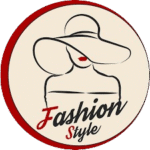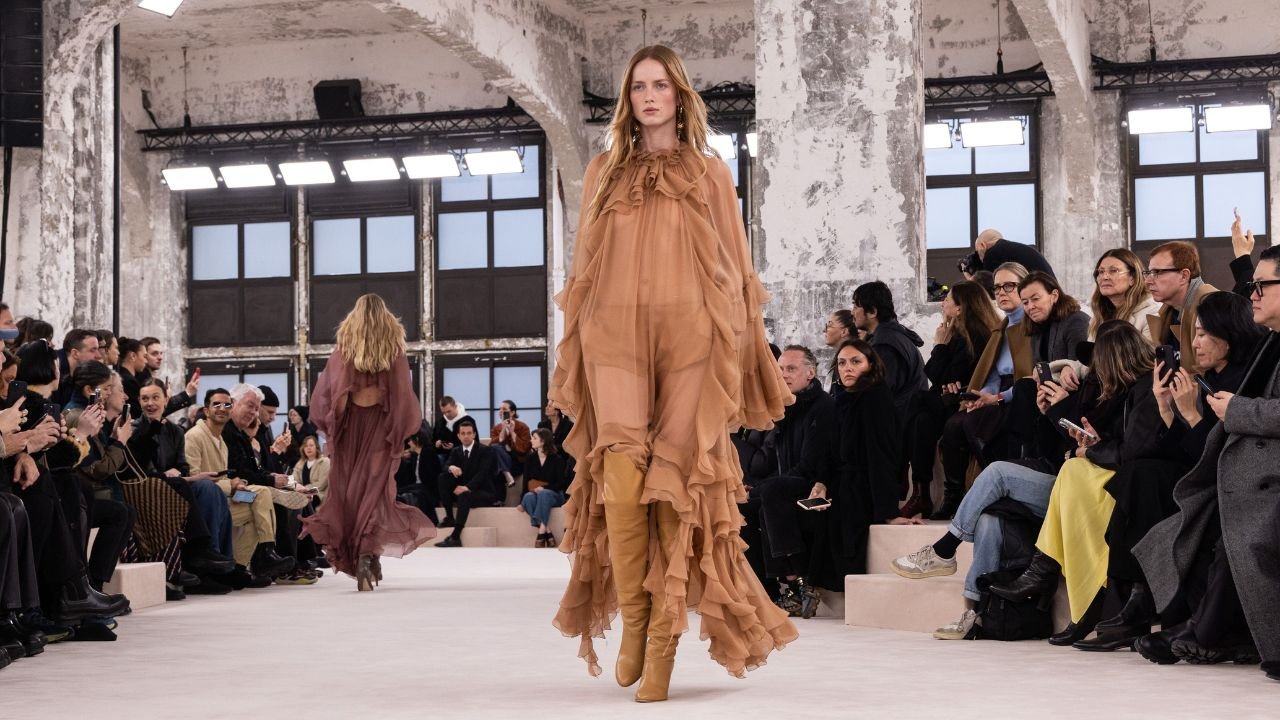Introduction
Fashion, historically associated with glamour, innovation, and self-expression, has long been criticized for its environmental and social impacts. From massive textile waste to unethical labor practices, the industry’s footprint has been substantial. However, in recent years, a paradigm shift has been underway—driven by consumers, designers, brands, and policymakers—toward a more sustainable, ethical, and eco-conscious approach.
This shift marks what can be described as a “Stylish Revolution”—a movement where sustainability is no longer an afterthought but a core principle woven into the fabric of fashion itself. The rise of sustainable fashion has redefined industry standards, influenced consumer behavior, and sparked innovative solutions that aim to harmonize style with social responsibility.
This essay delves into the genesis of sustainable fashion, its current landscape, key innovations, challenges faced, and the promising future of this transformative movement.
The Origins of Sustainable Fashion
Early Awareness and Ethical Movements
The roots of sustainable fashion trace back to broader environmental and social activism of the 20th century. The 1960s and 1970s saw the emergence of the environmental movement, with concerns about pollution, resource depletion, and the ethics of consumerism gaining prominence.
In the fashion industry, the 1990s marked a turning point with the rise of ethical fashion movements. Pioneers like Stella McCartney championed cruelty-free and eco-friendly designs, advocating for vegetarian and organic materials. The term “ethical fashion” gained traction, emphasizing fair labor practices, humane treatment of animals, and environmental stewardship.
The Fast Fashion Boom and its Consequences
The early 2000s witnessed the meteoric rise of fast fashion brands—H&M, Zara, Forever 21—that prioritized rapid production and low prices. While democratizing fashion and making trends accessible, fast fashion exacerbated environmental degradation, labor exploitation, and waste accumulation.
The environmental toll includes high water consumption, toxic dye runoff, greenhouse gas emissions, and textile waste. Social issues encompass unsafe working conditions and unfair wages in supply chains.
This dichotomy—between consumer desire for affordability and the ecological and ethical costs—set the stage for a push toward more responsible practices.
Consumer Awareness and the Demand for Change
By the 2010s, increasing awareness of the industry’s impacts led consumers to demand transparency, accountability, and sustainability. Social media amplified voices advocating for ethical consumption, giving rise to a new generation of conscious consumers.
Documentaries such as The True Cost (2015) exposed the hidden costs of fashion’s “cheapness,” fueling activism and prompting brands to rethink their strategies.
The Current Landscape of Sustainable Fashion
Defining Sustainable Fashion
Sustainable fashion encompasses a broad range of practices aimed at reducing environmental impact and promoting social responsibility throughout the fashion lifecycle. It involves:
- Eco-friendly materials: Organic cotton, hemp, Tencel, recycled fabrics, biodegradable fibers.
- Ethical labor practices: Fair wages, safe working conditions, community development.
- Waste reduction: Upcycling, zero-waste design, circular economy models.
- Transparency: Traceability of supply chains, certifications, and reporting.
- Longevity: Durable products, timeless design, repairability.
Key Players and Initiatives
Brands Leading the Way
- Stella McCartney: A pioneer in cruelty-free, sustainable luxury fashion, integrating eco-conscious materials and transparent practices.
- Patagonia: Known for environmental activism, promoting recycled materials, and advocating for conservation.
- Everlane: Focuses on radical transparency about manufacturing costs and practices.
- Reformation: Combines trendy designs with eco-friendly fabrics and sustainable operations.
- Allbirds: Specializes in sustainable footwear using natural merino wool and recycled materials.
Certifications and Standards
To ensure credibility, various certifications have emerged:
- Global Organic Textile Standard (GOTS): Certification for organic fibers and environmentally responsible processing.
- Fair Trade Certified: Ensures ethical labor practices.
- Cradle to Cradle: Focuses on products designed for circularity.
- B Corp: Certifies companies committed to social and environmental performance.
- OEKO-TEX: Ensures textiles are free from harmful substances.
Industry Initiatives
- Fashion Revolution: An NGO advocating for transparency and accountability.
- The Ellen MacArthur Foundation: Promotes circular economy principles in fashion.
- The Copenhagen Fashion Summit: A platform for sustainability dialogue among industry leaders.
- The Sustainable Apparel Coalition: Developed the Higg Index to measure sustainability performance.
Consumer Trends and Market Growth
The global sustainable fashion market is projected to grow significantly, driven by:
- Increasing consumer awareness.
- Millennials and Generation Z prioritizing ethical and eco-conscious brands.
- Regulatory pressures and policy incentives.
- Innovations in materials and manufacturing.
Studies indicate that a substantial portion of consumers are willing to pay a premium for sustainable products, and brands incorporating sustainability often enjoy enhanced brand loyalty.
Innovations Driving Sustainable Fashion
Materials and Textiles
Recycled and Upcycled Fabrics
Innovations in recycling textiles and plastics have led to a surge in recycled fibers like polyester derived from PET bottles, and fabrics made from recycled nylon or fishing nets.
Plant-Based and Biodegradable Fibers
Materials such as Tencel (lyocell), made from sustainably harvested eucalyptus trees, and Piñatex, derived from pineapple leaves, exemplify biodegradable, low-impact fibers.
Lab-Grown and Cultivated Textiles
Emerging technologies explore lab-grown leather (e.g., Modern Meadow) and biofabricated materials that eliminate animal suffering and reduce resource use.
Circular Economy and Zero Waste Design
Designing for longevity, repairability, and recyclability is central to circular fashion. Brands embrace:
- Zero-waste pattern cutting: Maximizing fabric efficiency.
- Modular and transformable garments: Allowing customization and extended use.
- Upcycling: Converting old garments into new designs.
Manufacturing and Supply Chain Innovations
- Digital printing: Reduces water and chemical use.
- Waterless dyeing: Techniques like air-dyeing and foam dyeing cut water consumption.
- On-demand production: Minimizes overstock and waste.
- Blockchain transparency: Tracks supply chain provenance and ethical compliance.
Technology and Digitalization
- 3D Design and Virtual Sampling: Cuts material waste and accelerates the design process.
- Augmented Reality (AR): Enhances online shopping experiences, reducing returns.
- Apps and Platforms: Promote secondhand shopping (e.g., Depop, ThredUp).
Challenges and Criticisms of Sustainable Fashion
Greenwashing and Lack of Standardization
Many brands claim sustainability without transparent evidence, leading to accusations of greenwashing. The absence of universal standards complicates verification.
Cost and Accessibility
Eco-friendly materials and ethical production often entail higher costs, making sustainable fashion less accessible to lower-income consumers.
Scale and Supply Chain Complexity
Implementing sustainable practices across complex global supply chains is technically and logistically challenging, especially for mass-market brands.
Consumer Behavior and Education
Sustainable fashion requires informed consumer choices and behavioral change, which can be hindered by habits, perceptions, and misinformation.
Environmental Impact of New Technologies
Some innovations, such as certain chemical recycling processes, may carry their own environmental footprints, necessitating rigorous lifecycle assessments.
The Future of Sustainable Fashion
Integration of Technology and Innovation
Advancements in biotechnology, AI, and blockchain will continue to enhance transparency, material innovation, and efficiency. Biofabrication and regenerative agriculture might become mainstream.
Policy and Regulation
Stricter regulations, such as extended producer responsibility (EPR), environmental taxes, and mandatory disclosures, will incentivize sustainable practices.
Consumer Empowerment
Education campaigns and transparent reporting will empower consumers to make informed choices, fostering demand for genuinely sustainable products.
Collaboration Across Industry
Partnerships among brands, governments, NGOs, and academia will accelerate innovation, standardization, and implementation of sustainable practices.
Cultural Shift Toward Slow Fashion
A movement toward quality over quantity, embracing slow fashion, capsule wardrobes, and secondhand shopping will reshape consumer culture.
Conclusion
The rise of sustainable fashion signifies more than a trend; it embodies a fundamental transformation in how the industry perceives its role within society and the environment. Driven by innovation, consumer demand, and a moral imperative, this movement is gradually dismantling the traditional paradigms of fast, disposable fashion.
While challenges remain—such as greenwashing, cost barriers, and supply chain complexities—the momentum for change is undeniable. Brands that prioritize transparency, invest in sustainable innovation, and foster a culture of responsibility will lead the way.
Ultimately, sustainable fashion is about merging style with purpose—a stylish revolution that champions beauty, ethics, and sustainability hand in hand. As consumers, designers, and policymakers continue to champion this cause, the future of fashion promises to be not only more responsible but also more inspiring and inclusive.
References and Further Reading
- The True Cost (2015) documentary film.
- Fashion Revolution: Who Made My Clothes? campaign.
- Ellen MacArthur Foundation: Reports on circular economy in fashion.
- McKinsey & Company: The State of Fashion reports.
- Books: Fashion & Sustainability: Design for Change by Kate Fletcher and Lynda Grose.
- Research Papers: Journals like Fashion Theory, Journal of Fashion Technology & Textile Engineering.

